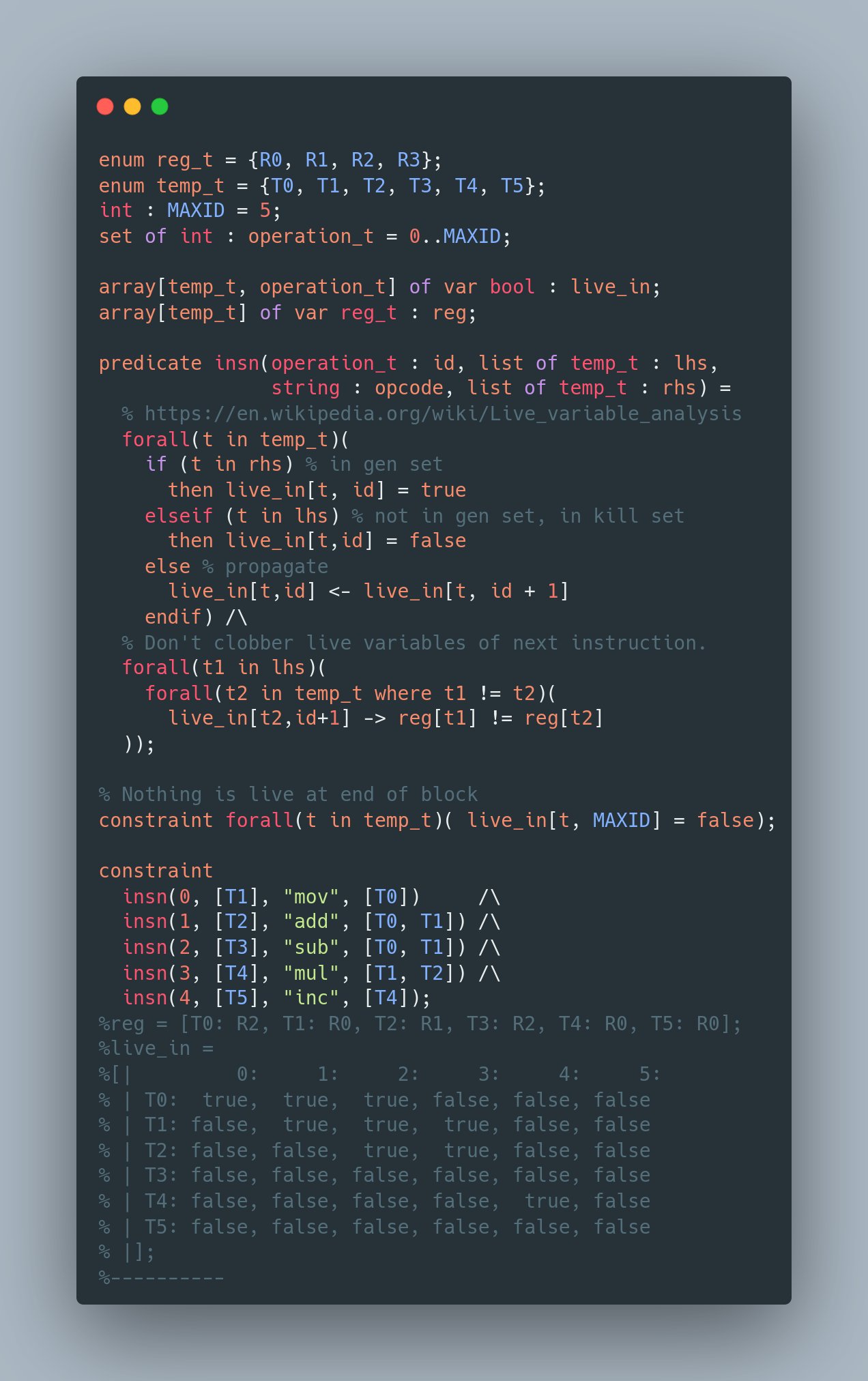
The article discusses the use of declarative, constraints-based approaches in compiler backends for challenges like register allocation and instruction scheduling, highlighting its benefits over traditional heuristic methods and distinguishing it from superoptimization strategies. It illustrates real-world applications and shares insights from projects like VIBES.
Main Points
Declarative Compilation Approach
Compiling with constraints involves using declarative approaches such as constraint solvers to optimize compilation processes, including instruction selection, register allocation, and instruction scheduling.
Difference between Superoptimization and Constraints-Based Compilation
The distinction between superoptimization and compiling with constraints lies in the focus areas of optimization - superoptimization seeks optimal instruction sequences based on semantics, while constraint-based compilation emphasizes on handling operational dependencies efficiently.
Insights
Register allocation can benefit from constraint-based approaches.
Register allocation is the backend problem most obviously castable as a constraint problem. It is often described as a variant of graph coloring (there are nuances like coalescing). Graph coloring selects a color for each vertex in a graph such that no edge connects two nodes of the same color.
Declarative approaches offer flexibility in compiler backend design.
The advantage to compiling with constraints is that it short, declarative and rapidly flexible.
Superoptimization focuses on instruction-to-semantics matching while compiling with constraints prioritizes operational dependencies.
Superoptimization traditionally scales very poorly. Compiling with constraints could feasibly be done at a much larger more practical scale as the Unison compiler showed.

